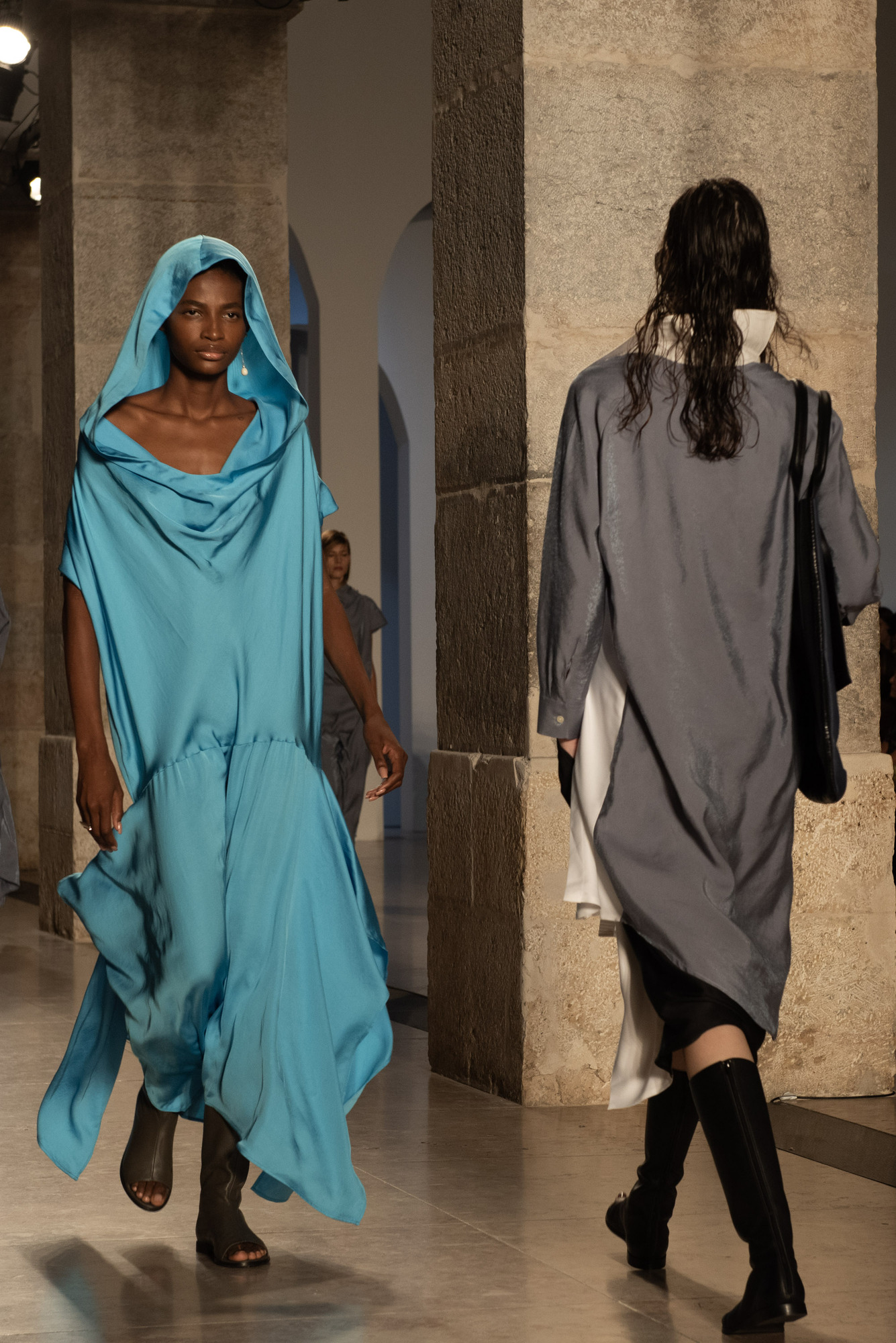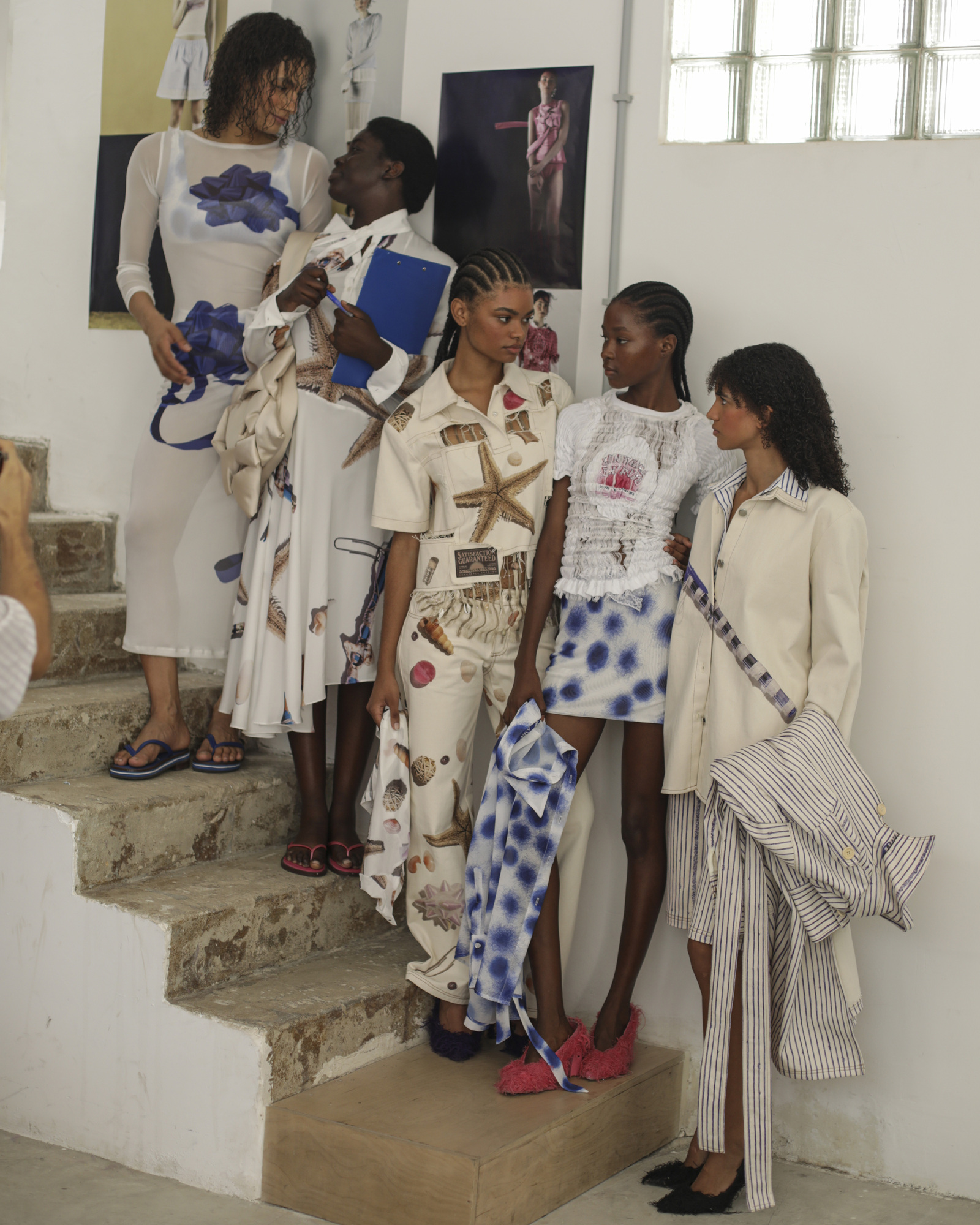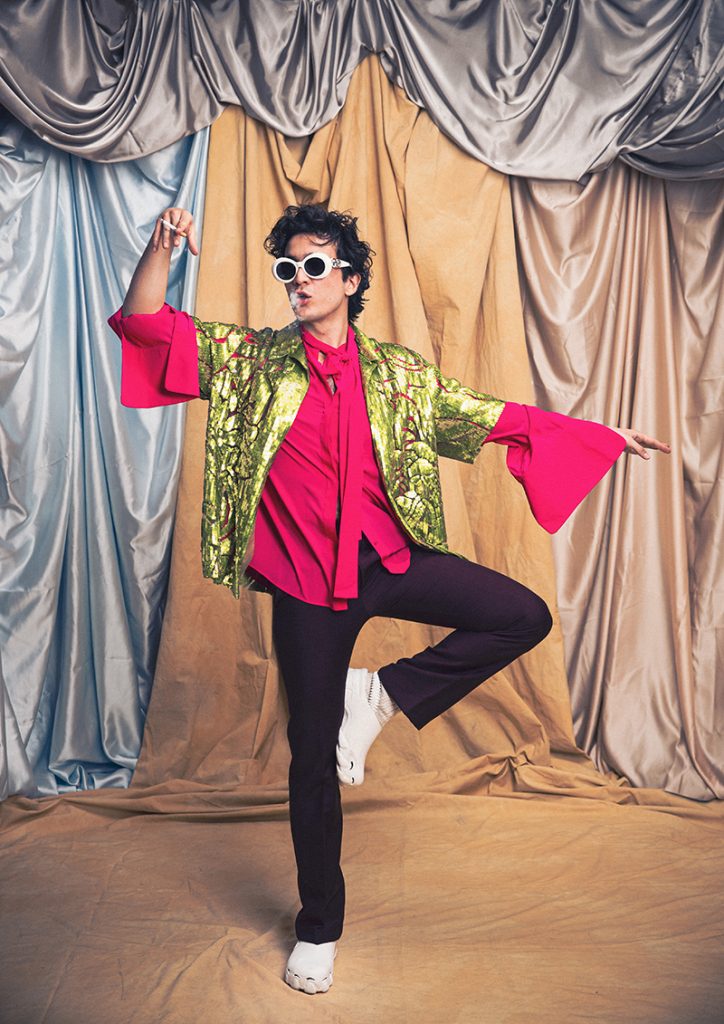From a career as a model to television and film via music, Alessandro Egger has managed to combine his passions while maintaining the same spontaneity and desire to delve deeper. To coincide with the release of his new film, Majonezë, we went over the highlights of his journey with him.


«Acting was a real calling for me. Then over time I decided to deepen some passions and experimented with different facets, for example the world of music»
From model to actor, how do you keep all these souls together?
Honestly, it comes very naturally to me. I don’t go looking for different situations. These are things that come to me overnight and I feel like going deeper, especially new ones. Film making was the first experience I wanted to do as a child; acting was a real calling for me. Then over time I decided to deepen some passions and experimented with different facets, for example the world of music. As a DJ, my experience in listening to a lot of music, a lot of different pieces, was crucial. I got a little bit ingenious and started getting into DJ sets.
And then, when I was 22 years old, fashion came along. I didn’t ask for it, I accepted it as something that happens to you in life. It represented a complete novelty for me, I didn’t know anything about it, so I jumped in. I said to myself, “Let’s see how it goes,” kind of like in everything that happens to me… like Instagram, creating content and so many other different things that I engage in that maybe have nothing to do with each other.



Alessandro Egger about Majonezë, the new film starring him: «My character, very introspective and emotional, is Serbian, just like me»
In film making, what are the experiences that have made you grow and also given you a boost in your career?
During the pandemic, having a lot of time on my hands, I resumed reading screenplays and auditioning through self-tape. And it was in this way that I was selected for a part in House of Gucci. It was an incredible experience being on set with Adam Driver and talking to Ridley Scott. Even though mine was not a lead part, I was on set with one of the best directors in the world directing me. My philosophy has always been a bit like this: there is no such thing as a small role, there is a small actor. From every role, no matter how tiny, you can bring out something giant. And that was the case with House of Gucci. Right after that I took part in this series with Marco Bocci (the main character in the narrative), who was nominated for an Oscar. And then came Majonezë, which I just finished shooting, where I have my first lead role.

These projects, back to back, were very important, but for the last one, because I was in the lead role, I worked deeply on character building, and the whole thing changed me so much. Even from an aesthetic point of view. I had to shave my hair: it may seem like a tiny thing, but totally changing my look, from platinum blond to shaved, makes you see everything from a different perspective. You also learn to be much simpler.
This change kind of made me re-embrace my essence and made me discover aspects of simplicity that I had forgotten. Plus my character, who is very introspective and emotional, is Serbian, just like me. This role was sought all over Italy; the production initially already had a leading man who, however, jumped a month away from the start of filming. I ended up with an international casting, with the same casting office that almost got me for a very big role, then dropped, with Anthony Hopkins.

It was an incredible coincidence because casting was looking for a Serbian all over Italy. I have always wanted to play a role in my native language. My character is a very tough guy who is used to being strong, partly because of his physical impressiveness. However, at the same time, he also proves to be very sensitive. Casting myself in his shoes allowed me to do real work on myself, a kind of self-therapy, and the director was able to bring out all my essence.

«There are many strong scenes. There is the strong one emotionally; the private and intimate one; an aggressive scene with my best friend»
What scene in the film do you think is the strongest?
There are many and they are all strong in different aspects. There is the strong one emotionally; the private and intimate one; an aggressive scene with my best friend; the one of interpersonal anger of mine, where it’s just me. Among the most intense scenes, certainly there is the one with the girl, although it lasts not very long, because the director wanted to focus not on the physical act, but on the aftermath. The strongest scene by far, though, I think is the one with my best friend; a moment where you witness two men of imposing physical size, all tattooed, just male.
How long did the production take you?
I shot two weeks. Everything was tight, with really very strong rhythms. I devoted myself to character preparation for another two weeks, so a month of full immersion. In the series, on the other hand, the whole thing took place in six months. Then, after the series, there was Ballando con le Stelle.

Alessandro Egger: «We find ourselves playing so many roles, in the end who are we really?»
And what did Ballando con le Stelle leave you with?
There I understood a little bit how live TV works. It’s not like regular TV, it’s something else. Live TV puts a certain kind of pressure on you, which is very amplified. It was a great school and especially I learned how to dance. I studied with my body, which is no small thing, and I gradually gained a good amount of confidence. It is also important for an actor to be able to dance; through an interpretation, which I thought was the right one, I was able to enhance the performance. Even with little nuances.
An actor’s sensibility leads to wanting to do a performance at all costs: you don’t just want to show the technical aspect to bring home the grade. When I was performing, I was immersing myself in a real play. I wanted to get it right on the level of costumes, interpretation, dancing, steps…everything. That gave me a hit in my personal life, because you don’t exist for five months anyway. In retrospect, I realized that I really teleported into that experience. Then one day I woke up and it was all over. You look around and see that the world has moved on. Everyone has also formed an opinion of you that you can’t even imagine.

Soon after that another important opportunity came my way and I went to Sanremo. After that I was chosen for Serena Bortone’s program Oggi è un altro giorno, until June. Then there was summer and I started shooting the film (and fashion was also involved)… We find ourselves playing so many roles, in the end who are we really? It only takes a touch to change everything.
How do you see your future in this alternation between film and music?
In my opinion this is kind of the key to holding everything together. Doing a little bit of everything. Keeping your brain engaged with different stimuli. Because if not, if you only engage in one thing, you become monotonous.

Credits
Photographer: Riccardo Lancia
Stylist: Arianna Zanetti
Producer: Jessica Lovato
Videomaker: Valentina Gilardoni
Backstage video: Irene Vesentini
Make-up: Revlon
Hair: American Crew
Stylist assistants: Giulia Sangaletti, Martina Santesi
Videomaker assistant: Luca Zito
Location: Hotel Hilton Milan

























































































































































































































































